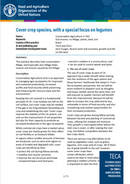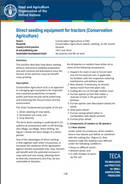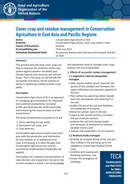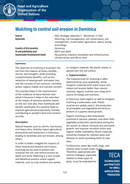Ressources

Factsheets - Keeping the soil covered is a fundamental principle of CA. Crop residues are left on the soil surface, but cover crops may be neededif the gap is too long between harvesting one crop and establishing the next. Cover crops improve the stability of the CA system, not only on the improvement of soil properties but also for their capacity to promote an increased biodiversity in the agro-ecosystem. While commercial crops have a market value, cover crops are mainly grown for their effect on soil fertility or as livestock fodder.

Factsheets - The term direct seeding is understood in CA systems as synonymous with no-till farming, zero tillage, no-tillage, direct drilling, etc. Figure 1 shows the basic design of a direct planter. One of the advantages of direct seeding is that together with other CA practices, it increases the resilience of the agrosystem against climate associated risks. Also, farmers will benefit with the potential increase in crop yield and cost saving, allowing them to diversify investments and thus, be less vulnerable to disasters.

Factsheets - Conservation agriculture systems start each year with the production and distribution of crop residues or an additional cover crop. Erroneously, it is often thought that Conservation Agriculture can only be successfully implemented if herbicides are applied. Fortunately, the creativity and persistence of many farmers and researchers has led to the current situation in which a lot of knowledge and equipment exist to manage cover crops without the use of herbicides.

Factsheets - The objective of mulching is to protect the soil from the impacts of heavy rainfalls, storms, and droughts, while providing complementary benefits, such as the reduction of weed growth and water loss, and the increase of soil moisture, microbial action, organic matter and nutrient content. This practice helps in the improvement of the resilience of those farmers that adopt it because it helps in the reduction of the impact of extreme weather events on the soil. And also, their livelihoods will benefit: eventually, this practice helps to improve agricultural productivity, thereby contributing to people’s food and nutrition security.
